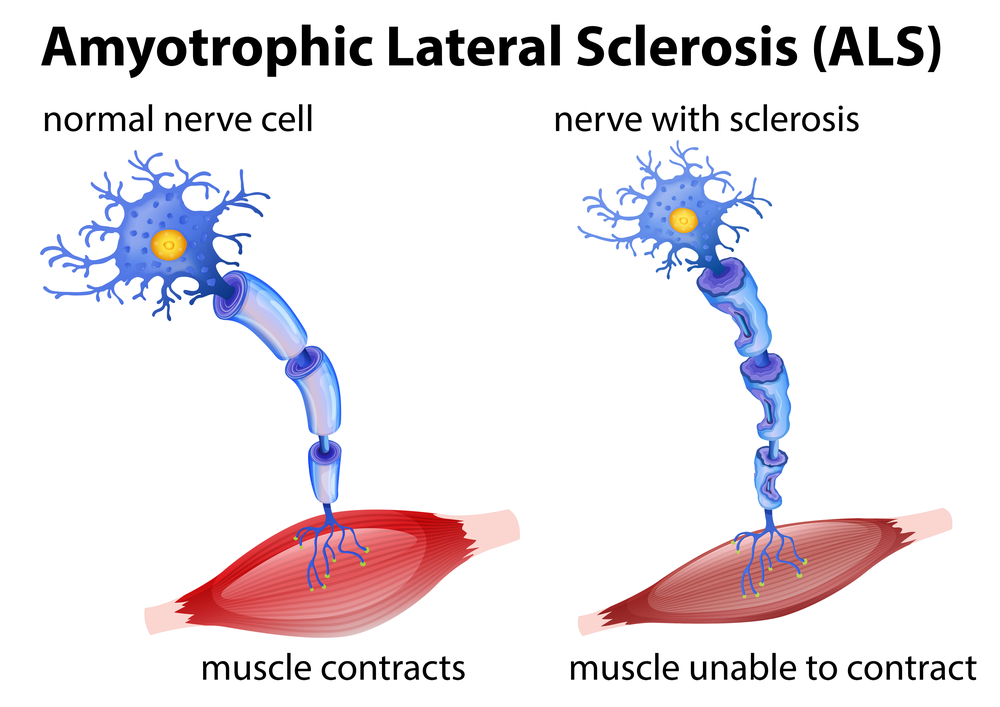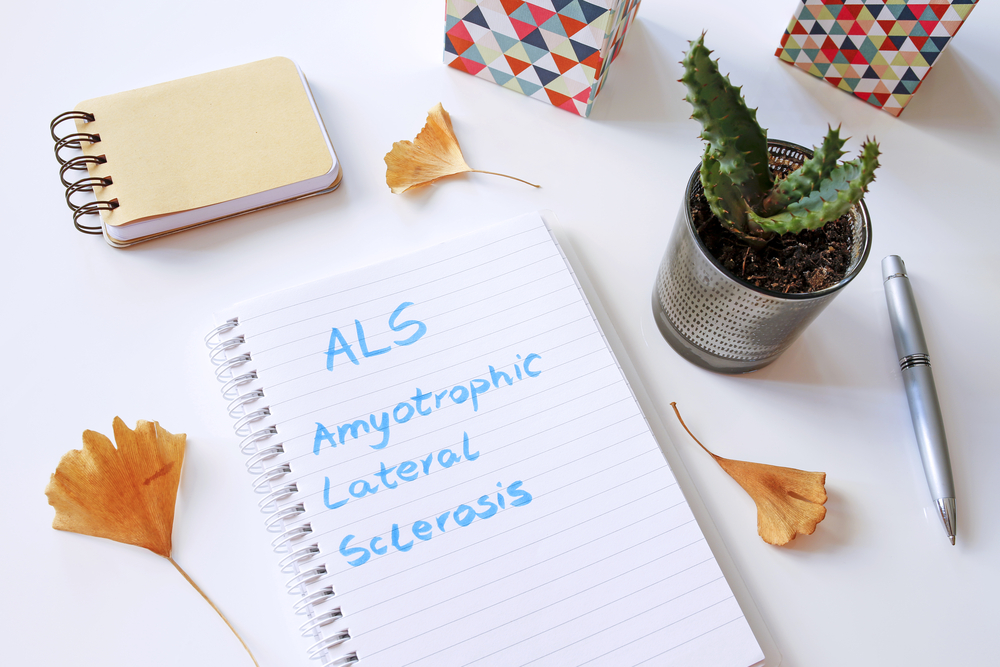More commonly known as Lou Gehrig’s disease, ALS is a neuromuscular disease that progressively worsens. About 5% of ALS sufferers inherit the disease, but for the rest of the population, the cause is completely unknown. Amyotrophic lateral sclerosis doesn’t currently have a cure, nor are there treatments that halt the progression of the disease.
What is ALS?

ALS affects the motor neurons that are responsible for voluntary muscle movements, like walking and talking. Motor neurons travel from the brain to the spinal cord, and then throughout the body to carry out movements we voluntarily make. When the muscles continue to degenerate, the signals from the brain to the nerves diminish and eventually stop altogether.
Once ALS has run its full course, an individual will no longer be able to function. The most common cause of death from ALS is respiratory failure due to the inability to breathe. Some individuals in the final stages of ALS will opt for a tracheostomy to use a respirator.
Who is at Risk?
While a small portion of those with ALS gets the disease from genetic variations, some environmental factors may be partially to blame. These factors are smoking and prolonged exposure to toxins, metals, and chemicals. More risk factors may be associated with age, as more ALS sufferers are between the ages of 40 and 60, and sex, as slightly more men develop ALS than women.
ALS is responsible for 5 out of every 100,000 deaths for individuals 20 years and older, and it does not take hold of people based on any ethnic, racial, or socioeconomic factors.
Symptoms and Complications
Symptoms of ALS are experienced differently from person to person in various stages throughout the progression of the disease. The first stages of ALS begin to manifest in the hands and feet. These manifest as:
- Loss of motor control in the hands and arms
- Twitching or cramping in the hands and feet
- Muscle stiffness
- Weakness and fatigue
- Difficulty speaking loudly
- Difficulty speaking clearly (slurred speech)
- Tripping
- Falling
As the disease worsens, symptoms will begin to become more severe and will include difficulty breathing and breathing and becoming entirely paralyzed.
Laboratory tests, muscular and neurological biopsies, x-rays, MRIs, EMGs, and spinal taps are some of the tests used to diagnose ALS. Medical history and physical examination help doctors determine the diagnosis of ALS and allow them to put the disease in one of 5 classifications of severity.
On average, people with ALS will perish within 3-5 years after the onset of symptoms, though some live with ALS for 10 or more years. Although ALS is not curable, the FDA has approved some medications to improve the quality of life for those with ALS. These include Riluzole, a medication that increases life expectancy by up to 6 months, and Edaravone, an intravenous infusion that helps reduce daily decline.
Conclusion
ALS is a fatal disease that takes over the lives of over 31,00 US patients with 5,000 more diagnoses every year. Unfortunately, nobody knows exactly how ALS is caused other than familial cases, but some medications help ease some symptoms and increase life expectancy.



